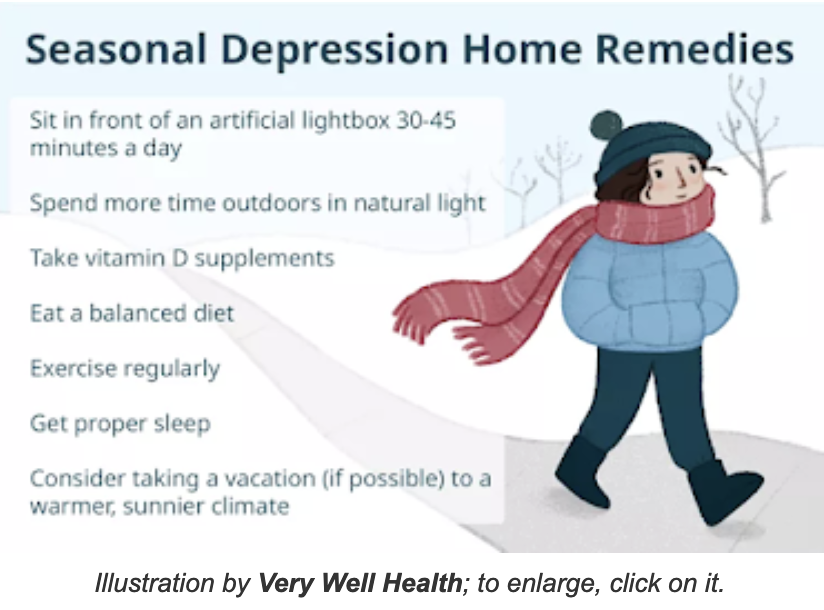It’s SAD, but: Seasonal affective disorder, associated with winter darkness, is common and has a wide range of treatments

The symptoms are the same as clinical depression, Kelly Rohan, a psychologist at the University of Vermont who specializes in the disorder, told Gibbens: “We would look for things like a persistently sad mood. Losing interest in things. Sleep changes. Significant eating or appetite change. Losing energy. Fatigue. Difficulty concentrating.”
At Yale University’s Winter Depression Research Clinic, “The most commonly reported symptoms of winter depression are hypersomnia—the desire to sleep more than usual—and an increased appetite, says Paul Desan, a psychiatrist and the clinic’s director,” Gibbens reports, quoting him: “It’s like human beings are trying to hibernate.”
But not exactly: “About three times as many women as men get SAD for reasons we don’t understand,” Desan said.
One of the most common treatments is sitting daily in front of a bright box of light for 30 minutes, usually first thing in the morning, Gibbens reports: “Experts say the key is to look for light boxes that provide light equalling 10,000 lux, a measure of brightness. . . . Desan’s clinic’s website lists vetted boxes.”
Hobbies may also help, Rohan suggests: “People with SAD often have hobbies and interests that are summer specific—growing gardens, beach going,” Winter alternatives are knitting, joining a book club, or going to the gym.
Norman Rosenthal of Georgetown University, who first identified SAD in 1984, told Rohan that lifestyle changes can also be useful against it. “Exercising, learning ways to manage stress, or planning a sunny vacation during the winter can all help to boost your mood, he says. Whether using light or talk therapy, Rosenthal stresses that there’s no reason to not seek mental health treatment, even if symptoms are only present for a few months out of the year.”